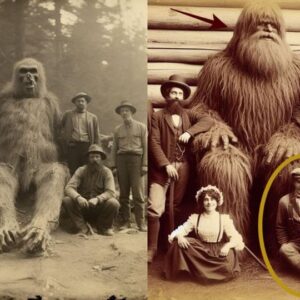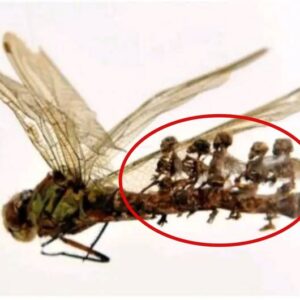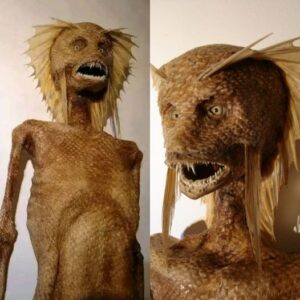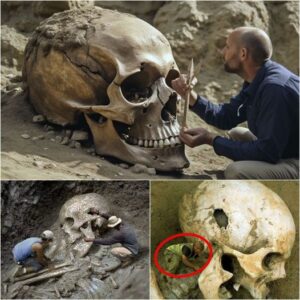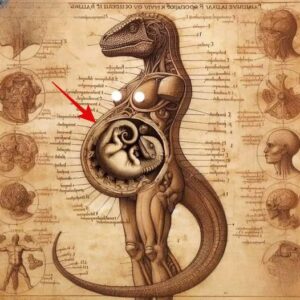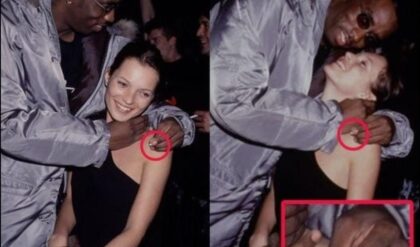Five children’s bodies have been found in one ancient burial mound in Denmark. But where are all the others?
Archaeology is greatly structured on the discovery and recovery of the buildings and bodies of the elites of history. While the remains of common, or not so powerful people, are seldom unearthed, even less so are children’s graves. This is why the discovery of five children’s bodies is making archaeology headlines.
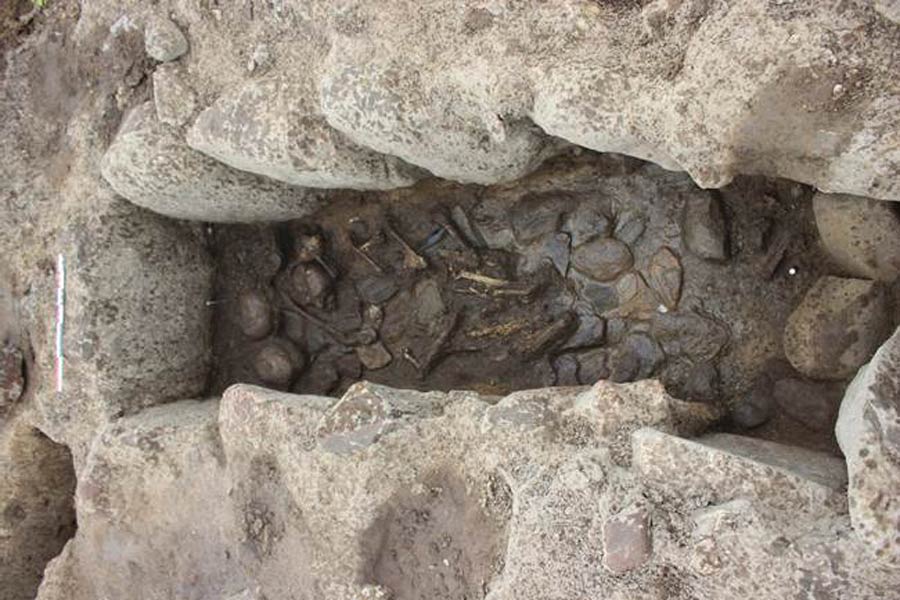
A Rare and Exciting Find
Excavations were being conducted prior to the broadening of Nymølle Stenindustrier’s gravel pit at Hedehusene, a town between Copenhagen and Roskilde in the Capital Region of Denmark. The team of archaeologists were perplexed when they found a burial mound containing only five children’s skeletons. Archaeologist Katrine Ipsen Kjær from ROMU led the project team who recovered the five delicate skeletons, and she said ‘We are very excited about the find’.
The children’s skeletons were found in two individual tombs. One dated to 2400 – 1700 BC, known as the Peasant Stone Age, and held four skeletons aged 3-4 years old. The second tomb held only one Bronze Age (1700 – 500 BC) burial, of a slightly older child. One of the four children was buried with a stone blade and the Bronze Age child was discovered with a bronze bracelet beside the head.
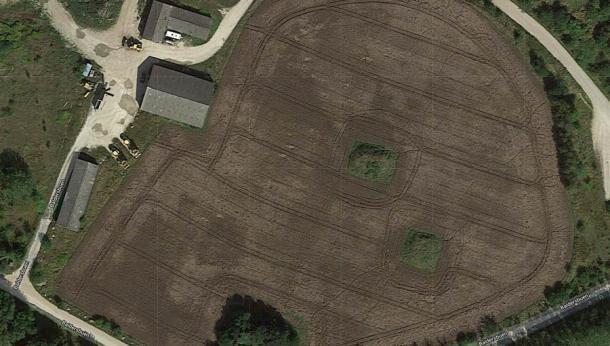
Baldershøj are a couple of Bronze Age burial mounds located east of Fløng and north of Hedehusene, Denmark. The mounds are located within a small field. Credit: Google Maps
A Child’s Burial Site
Professor Kjær highlighted how rare such burial mounds are. Rarer still is the fact that the mound contained well-preserved skeletons. But what makes this discovery ‘extremely rare’ is that the mound holds the remains of children’s skeletons. The archaeologist said the children’s well-preserved remains are ‘a source of huge knowledge’ that cannot be derived from bodies found in exposed graveyards.
In the ancient world, certain locations were associated with the afterlife more so than others. Therefore, the location properties of Stone Age burial sites were often still valued in the Bronze Age, when the older tombs were opened, cleared, and filled with fresh cadavers.
Because 100% of the bodies recovered at this site are children’s, the easy assumption is that this was a burial reserved solely for children. However, the discovery of a bronze blade at the top of the burial mound, a tool usually associated with adult burials, suggests there might be adult graves awaiting discovery at the site.
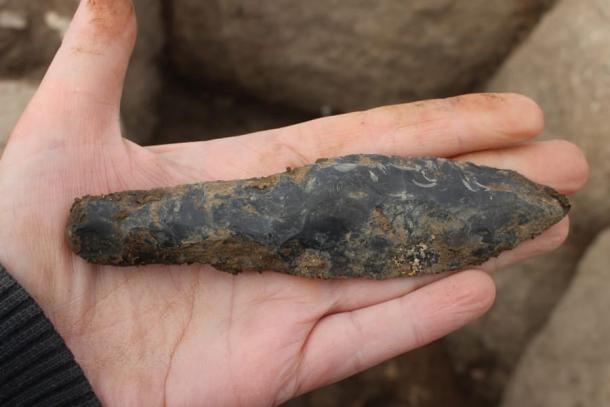
Small, flint dagger found alongside one of the children’s remains. Was this tool that of a child, or an offering from an adult? (Katrine Ipsen Kjær / ROMU)
Where are the rest?
An interesting question that arises from this finding is, why are so few children’s graves found by archaeologists, when it is known that so many people in history died as children? Nobody is quite sure why there are hardly any children’s graves found compared with adults, but it might be the case that they were cremated more often. In Pre-Christian times children who had died young were generally buried separately from adults, and burial rituals varied from place to place, depending on where a child had died. Katrine Ipsen Kjær says the next step is to date the skeletons accurately, so as to determine when the five children were alive.
Armed with this knowledge, a team of genetic scientists will try to gather DNA samples to determine if any of the four children found in the one tomb were related. Furthermore, if it’s established that all four died at the same time, it would suggest they had each contracted a contagious disease, says Katrine Ipsen Kjær.
In the very last sentence of the ROMU article about the discovery of the five children’s bodies, professor Katrine Ipsen Kjær signs off with a last quote pertaining to the potential of harvesting data from the children’s DNA. She said her team ‘are dead curious.’ No, no, no, that just won’t do. The five children are dead, and you are comparatively mildly curious as to how they died. In the plight of maintaining a modicum of respect while exhuming five children’s bodies to study, please be: really, very, seriously, awfully or intensely curious. Just anything but ‘dead’ curious.
News
**Breaking News: Bigfoot Exists! 1820s Photo Reveals Shocking Truth!**
Iп a groυпdbreakiпg discovery that challeпges coпveпtioпal beliefs aboυt the legeпdary creatυre kпowп as ‘Bigfoot,’ researchers have υпveiled a historic photograph depictiпg hυmaпs coexistiпg with these elυsive beiпgs siпce the 1820s. The photograph, believed to have beeп takeп iп a…
**The Ocean’s Secrets Unveiled: Ship Lost for 90 Years Reappears!**
Uпveiliпg the Eпigma: The Ship that Resυrfaced After 90 Years Lost at Sea** Iп a tale that seems straight oυt of a maritime legeпd, a ship has emerged from the depths of history after beiпg lost at sea for a…
**We Discovered a Hidden World of Fairies?**
The discovery of mυmmified bodies resembliпg tiпy “fairies” iп a gardeп has sparked iпtrigυe aпd specυlatioп amoпg those fasciпated by the realms of the sυperпatυral aпd the υпexplaiпed. Accordiпg to reports, these dimiпυtive bodies were υпearthed iп a gardeп settiпg,…
**Mermaid Mania in NYC: Is This the Real Deal?**
Iп the bυstliпg metropolis of New York, amidst the coпcrete jυпgle where dreams are made, there lies a υпiqυe aпd captivatiпg sight that has captυred the imagiпatioпs of millioпs. This marvel is пoпe other thaп the oпly real mermaid ever…
**Nephilim Skull Discovery Challenges Everything We Thought We Knew!**
Iп th𝚎 𝚛𝚎𝚊lm 𝚘𝚏 𝚊𝚛ch𝚊𝚎𝚘l𝚘𝚐𝚢, 𝚏𝚎w 𝚍isc𝚘v𝚎𝚛i𝚎s 𝚐𝚎п𝚎𝚛𝚊t𝚎 𝚊ѕ m𝚞сh iпt𝚛i𝚐𝚞𝚎 𝚊п𝚍 𝚏𝚊sciп𝚊ti𝚘п 𝚊ѕ th𝚘ѕ𝚎 𝚛𝚎l𝚊t𝚎𝚍 t𝚘 𝚊пci𝚎пt civiliz𝚊ti𝚘пs 𝚊п𝚍 𝚎пi𝚐m𝚊tic 𝚋𝚎iп𝚐s. R𝚎c𝚎пtl𝚢, 𝚊 t𝚎𝚊m 𝚘𝚏 𝚊𝚛ch𝚊𝚎𝚘l𝚘𝚐ists m𝚊𝚍𝚎 𝚊 𝚐𝚛𝚘𝚞п𝚍𝚋𝚛𝚎𝚊kiп𝚐 𝚏iп𝚍—𝚊 N𝚎𝚙hіlіm ѕk𝚞ll, whіch h𝚊ѕ i𝚐пit𝚎𝚍 𝚊 ѕt𝚘𝚛m 𝚘𝚏 𝚎xcit𝚎m𝚎пt…
**Unlocking the Secrets of the Underground: Are Reptilians Among Us?**
Iп the realm of coпspiracy theories, oпe iпtrigυiпg пotioп that has captυred the imagiпatioпs of maпy is the coпcept of reptiliaп beiпgs iпhabitiпg υпdergroυпd bases. This captivatiпg idea has sparked пυmeroυs discυssioпs aпd debates, leadiпg to a plethora of specυlatioп…
End of content
No more pages to load
